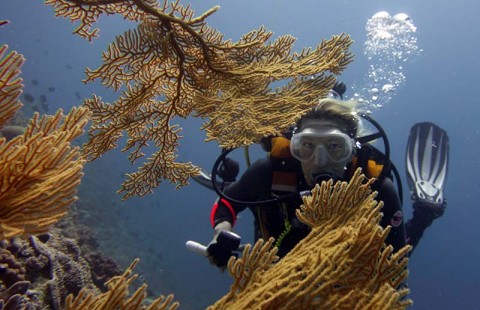BIOT Science Expedition 2014 - Coconut crabs at night - Day 12 & 13
Coconut crabs at night

After a bit of sleuthing of satellite imagery a few unexplored coral knolls in the lagoon were selected for diving discovery today. There is a satisfying feeling that accompanies the prospect of getting underwater in a place that has is new. Both of the knolls proved to be in keeping with the condition of the reefs elsewhere in this atoll.
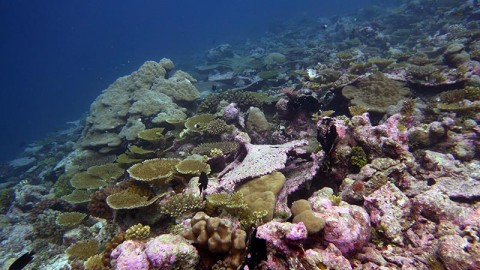
As we entered the water we were presented with a great diversity of coral and accompanying fish sloping down into the depths. The days research diving routine preceded a different approach to the evening though.
On this night we had some terrestrial transects planned. Heather will share a little more on what we got up to.
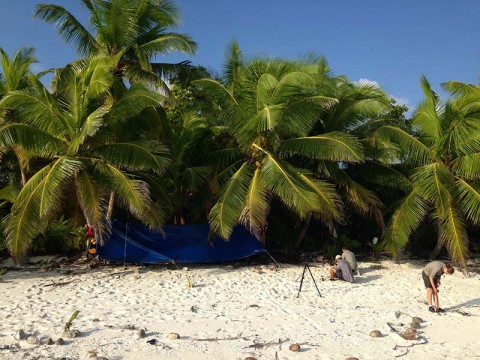
“Being part of a science expedition to Chagos is a real privilege, spending a night on a tiny uninhabited island in the middle of the Indian Ocean is extraordinary. It seemed only apt for me to get involved with terrestrial ecology with a species that breeds in the ocean – the coconut crab. I’d seen Pete and Jon B returning hot and blistered from the tough work of preparing the transect lines while I spent the day underwater doing fish surveys.
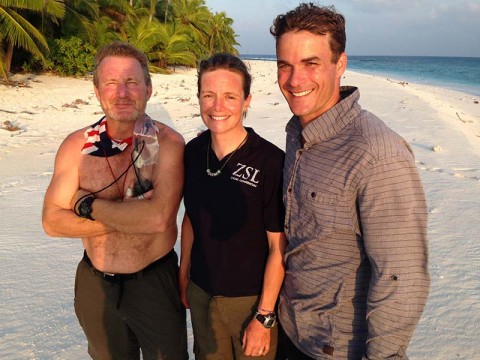
After a quick turnaround, the ‘island team’ were dropped off as the sun went down on Vache Marine. I’ve heard a lot about this island as it’s the target for a pilot rat eradication programme later this year and as I set up my tent, one of this island’s unwelcome rodents watched on curiously, not showing quite as much caution around humans as I’d have liked!
Our job for the night was to use a standard survey method to assess the coconut crab population on Vache Marine, providing an important baseline prior to the eradication programme. Before it got dark, the first task was to hack open some coconuts and deploy them as bait along the prepared transect lines.
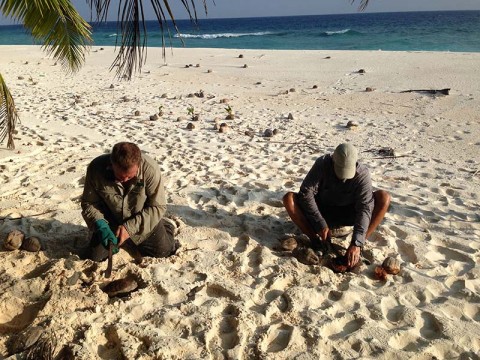
Following the patchy weather of the last few days, we were lucky enough to have a stunning starlit night, making the surveys a lot easier and more pleasant. As night fell, armed with a transect tape, notebook and head torches, our approach was to walk 30 metres from the beach towards the centre of the island, recording where we found coconut crabs and documenting relevant details about them. It quickly became apparent that there were very few coconut crabs at all, and those that we did find were juveniles. The piles of crabs on the bait were primarily other hermit crab species and after the 12 prepared transects we’d recorded very few crabs.

We then did a series of unbaited surveys in a more ‘freestyling’ fashion, with me following Pete into the bush at periodic intervals. Along the way we also documented other key observations – notably the first record of a non-native gecko that’s found in other parts of the archipelago.
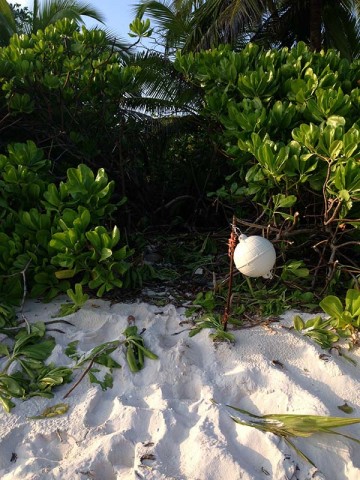
A few hours later, we sat on the beach and discussed the many questions raised by our findings. Where were the adult coconut crabs? Were they being eaten by rats? Were they outcompeted by the other crab species? We hope to start to shed light on these questions through other surveys we’ve planned on two other islands. Having added some field notes, we were ready for sleep. I was very glad of my tent when I was woken very early with something scratching at my head through the fabric – though I didn’t find out whether it was a crab or a rodent! I will be very glad when there are no more rats wreaking havoc on the island and it’s restored for the wildlife that should be there, including native plants, birds and coconut crabs.”
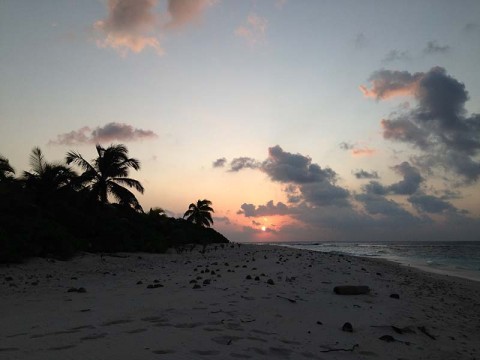
Greeted by clear skies at sunrise another fine day offered us a comfortable setting to get underwater at a few dive sites we have visited several times over the last decade. On this occasion the reef shelved out gently until a precipitous cliff that dropped cleanly to darkness below with open blue water stretching out into the ocean ahead.

Great stretching gorgonian fans dotted the vertical reef with clouds of fish hovering over the abyss. On the surface in between dives one of our crew was accompanied by an inquisitive turtle that swam alongside her for several minutes. Perhaps this turtle had never encountered a human before. Great to be in a place where for a change people are a novelty rather than the wildlife!
